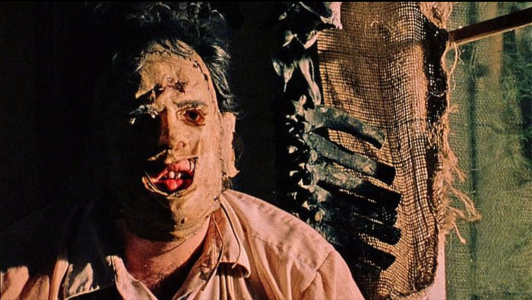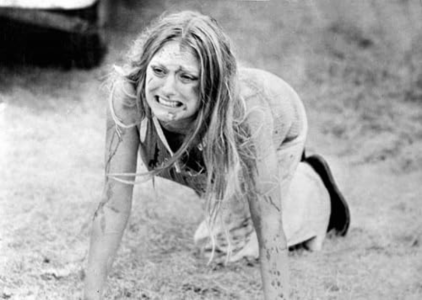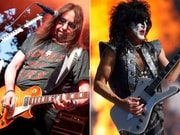The chilling truth behind a horror classic—what was real on set?
By
Aubrey Razon
- Replies 2
Disclaimer: This article discusses unsettling and graphic details related to a horror movie production. Reader discretion is advised.
When The Texas Chainsaw Massacre hit theaters in 1974, it terrified audiences and became a horror legend. But what happened behind the scenes might be even more disturbing than the movie itself.
What dark secrets were lurking on set?
Director Tobe Hooper, alongside co-writer Kim Henkel, crafted a narrative so unsettling that finding a distributor willing to touch it proved to be a nightmare of its own.
The film's violence, combined with its shoestring budget and a cast of unknowns, made it a hard sell.
Yet, when Bryanston Distributing Company finally took a chance on it, the gamble paid off handsomely, with box office earnings that would be the envy of any blockbuster today.
Not everyone was ready for the film's unflinching brutality.
In San Francisco, moviegoers fled theaters, unable to stomach the horror.
Canadian cinemas pulled the film from their screens, and it faced outright bans in countries from Britain to Brazil.
Australia deemed it too terrifying for public consumption for two full decades.
The film's budget constraints are legendary, with a reported $60,000 to cover everything from cast salaries to set design.
This meant that every penny had to be stretched to its limit.
When it came to props, the production team faced a dilemma: how to achieve a realistic look without the funds for high-end special effects or convincing prosthetics.
The solution was as morbid as it was cost-effective.
Real human skeletons, imported from India, were cheaper than their plastic counterparts and lent an authenticity to the film that synthetic bones simply couldn't match.
Director Tobe Hooper candidly admitted to using real skeletons for certain scenes, including the one where a character is impaled on a tombstone.
Art director Robert A. Burns took the quest for realism a step further, scouring the countryside for actual animal carcasses to dress the set.
The result was a horrifying collection of deceased livestock that contributed to the film's unsettling atmosphere.
The infamous dinner scene, already brutal onscreen, was a literal nightmare to shoot.
Cast and crew were trapped inside a sweltering Texas farmhouse for over a day, with no escape from the heat or the stench of decaying meat and dripping blood from a slaughterhouse.
The intense camera lights only exacerbated the situation, cooking the organic matter and overwhelming the senses of everyone present.
Actor Edwin Neal, who portrayed the hitchhiker, compared the experience unfavorably to his time in Vietnam, a stark testament to the shoot's grueling conditions.
Moreover, some of the blood seen on screen was real, a consequence of technical issues with the fake blood apparatus.
In a particularly harrowing moment, actress Marilyn Burns, who played Sally, had her finger genuinely cut with a razor to capture a scene, blurring the line between performance and actual pain.
Despite—or perhaps because of—these gruesome production details, The Texas Chainsaw Massacre has cemented its place in cinematic history.
It's a testament to the lengths filmmakers will go to in pursuit of their vision, and a reminder of the physical and psychological toll that such a pursuit can exact.
For the GrayVine community, this story serves as a fascinating glimpse into the past, a time when the horror genre was being redefined by bold, unorthodox methods.
It's a reminder that the stories behind the films we watch can be just as compelling as the films themselves.
 Were you aware of the real skeletons used in The Texas Chainsaw Massacre? Does knowing the truth behind the props change your perception of the film? Share your thoughts with us in the comments below.
Were you aware of the real skeletons used in The Texas Chainsaw Massacre? Does knowing the truth behind the props change your perception of the film? Share your thoughts with us in the comments below.
When The Texas Chainsaw Massacre hit theaters in 1974, it terrified audiences and became a horror legend. But what happened behind the scenes might be even more disturbing than the movie itself.
What dark secrets were lurking on set?
Director Tobe Hooper, alongside co-writer Kim Henkel, crafted a narrative so unsettling that finding a distributor willing to touch it proved to be a nightmare of its own.
The film's violence, combined with its shoestring budget and a cast of unknowns, made it a hard sell.
Yet, when Bryanston Distributing Company finally took a chance on it, the gamble paid off handsomely, with box office earnings that would be the envy of any blockbuster today.
Not everyone was ready for the film's unflinching brutality.
In San Francisco, moviegoers fled theaters, unable to stomach the horror.
Canadian cinemas pulled the film from their screens, and it faced outright bans in countries from Britain to Brazil.
Australia deemed it too terrifying for public consumption for two full decades.
The film's budget constraints are legendary, with a reported $60,000 to cover everything from cast salaries to set design.
This meant that every penny had to be stretched to its limit.
When it came to props, the production team faced a dilemma: how to achieve a realistic look without the funds for high-end special effects or convincing prosthetics.
The solution was as morbid as it was cost-effective.
Real human skeletons, imported from India, were cheaper than their plastic counterparts and lent an authenticity to the film that synthetic bones simply couldn't match.
Director Tobe Hooper candidly admitted to using real skeletons for certain scenes, including the one where a character is impaled on a tombstone.
Art director Robert A. Burns took the quest for realism a step further, scouring the countryside for actual animal carcasses to dress the set.
The result was a horrifying collection of deceased livestock that contributed to the film's unsettling atmosphere.
The infamous dinner scene, already brutal onscreen, was a literal nightmare to shoot.
Cast and crew were trapped inside a sweltering Texas farmhouse for over a day, with no escape from the heat or the stench of decaying meat and dripping blood from a slaughterhouse.
The intense camera lights only exacerbated the situation, cooking the organic matter and overwhelming the senses of everyone present.
Actor Edwin Neal, who portrayed the hitchhiker, compared the experience unfavorably to his time in Vietnam, a stark testament to the shoot's grueling conditions.
Moreover, some of the blood seen on screen was real, a consequence of technical issues with the fake blood apparatus.
In a particularly harrowing moment, actress Marilyn Burns, who played Sally, had her finger genuinely cut with a razor to capture a scene, blurring the line between performance and actual pain.
Despite—or perhaps because of—these gruesome production details, The Texas Chainsaw Massacre has cemented its place in cinematic history.
It's a testament to the lengths filmmakers will go to in pursuit of their vision, and a reminder of the physical and psychological toll that such a pursuit can exact.
For the GrayVine community, this story serves as a fascinating glimpse into the past, a time when the horror genre was being redefined by bold, unorthodox methods.
It's a reminder that the stories behind the films we watch can be just as compelling as the films themselves.
Key Takeaways
- The Texas Chainsaw Massacre was made on a very low budget and faced difficulties finding a distributor due to the violence and lack of known actors.
- Real human skeletons were used in the film because it was cheaper than plastic reproductions.
- Art director Robert A. Burns used real animal corpses collected from the countryside to add authenticity to the set.
- Cast and crew endured extreme conditions during the shooting of the dinner scene, with high temperatures, no ventilation, and the smell of rotting meat and real blood adding to the intensity of the filming experience.








